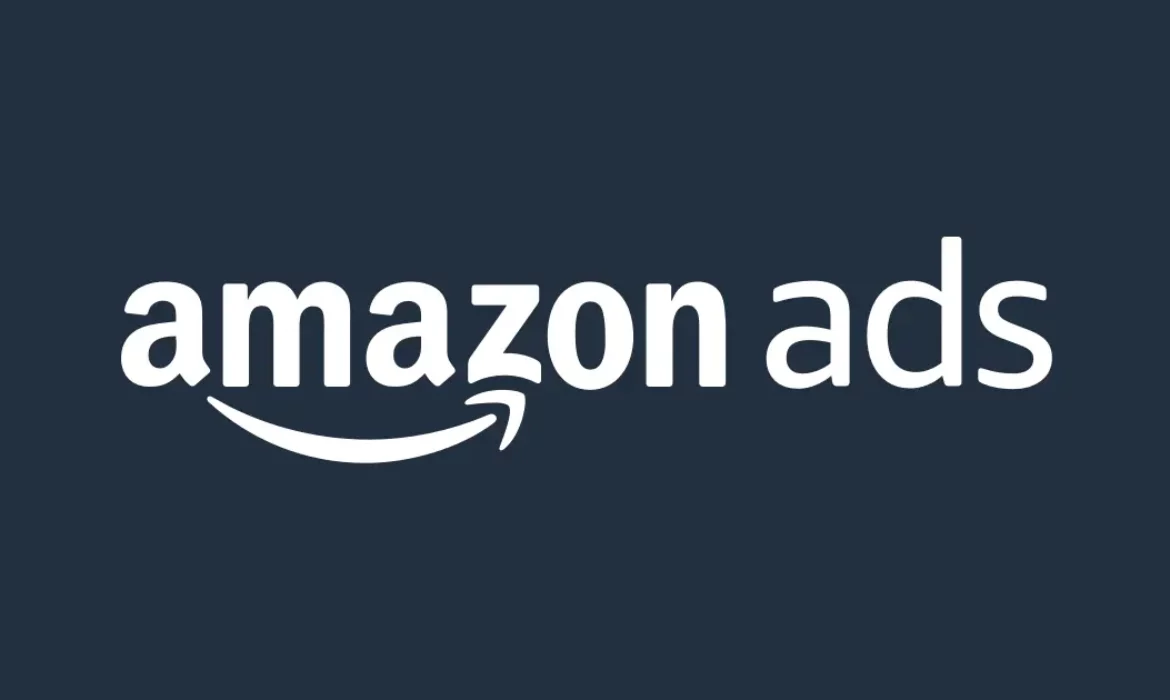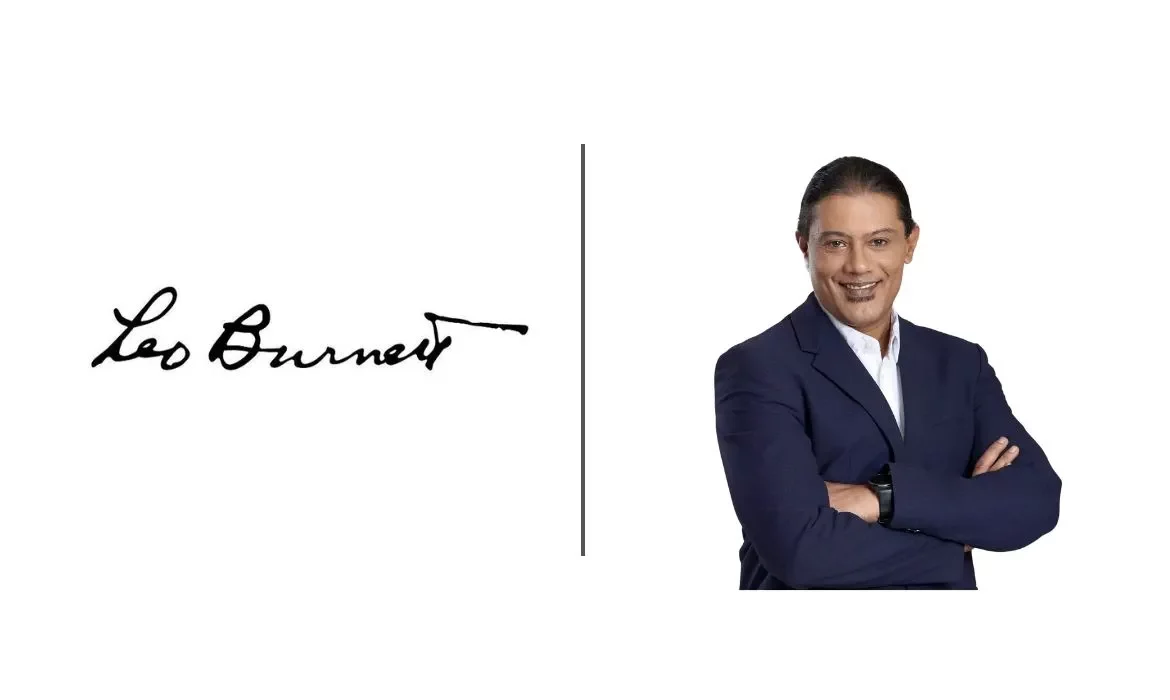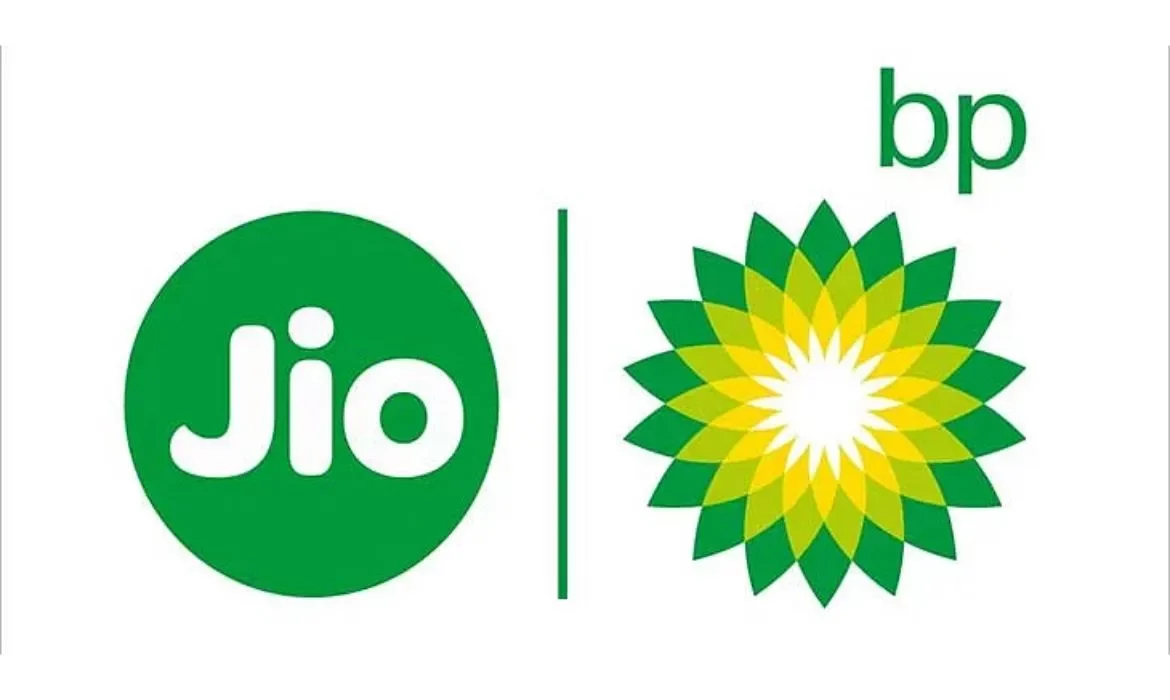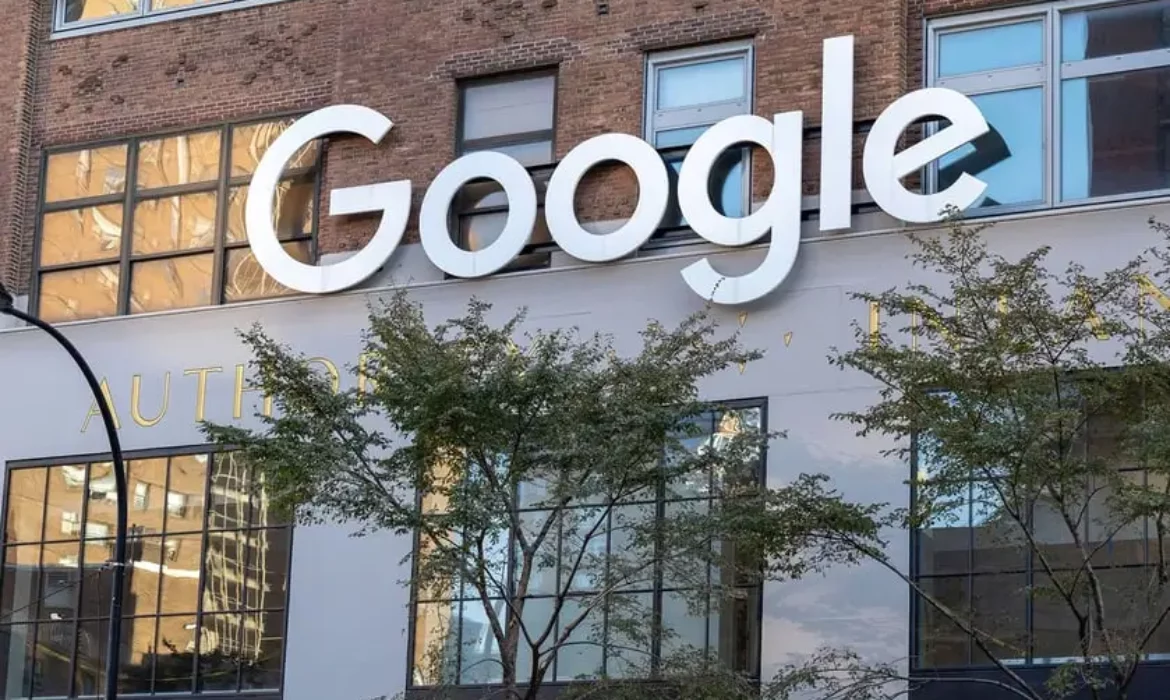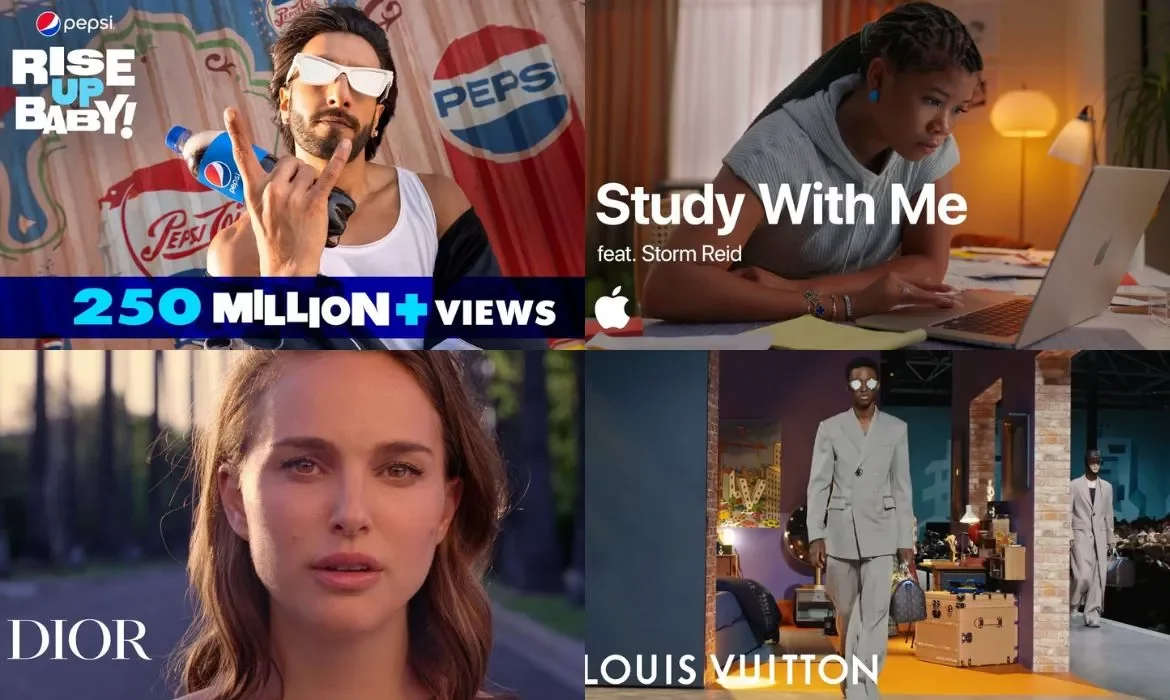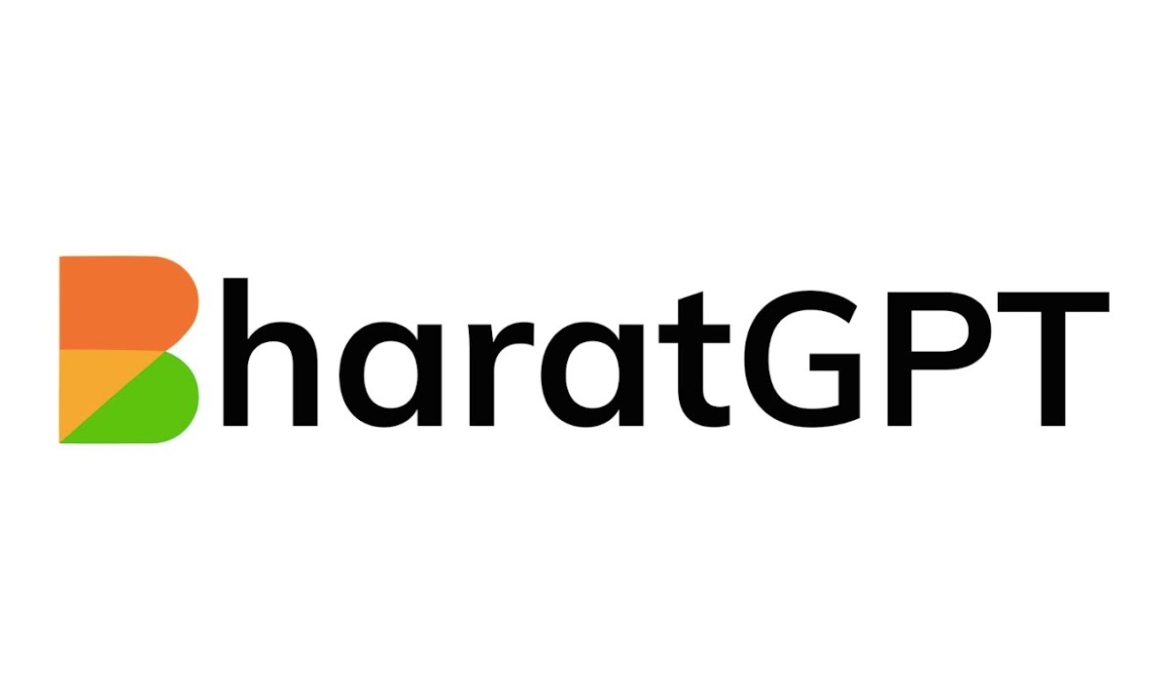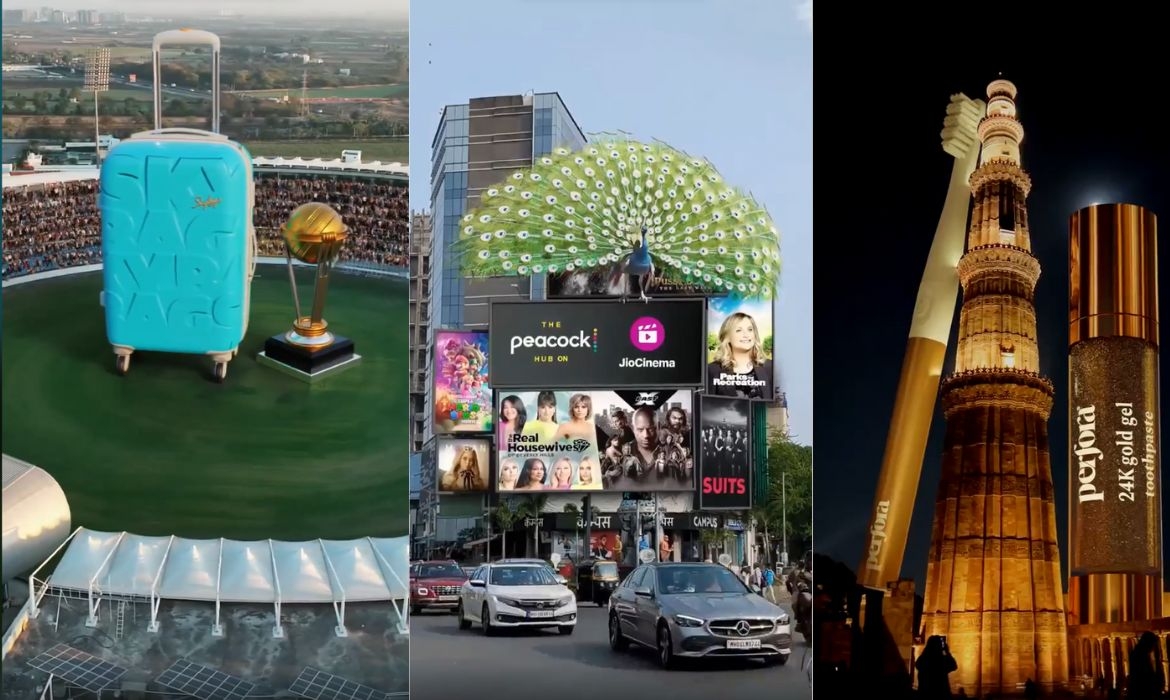GroupM Announces Ad Innovation Accelerator for Future of Advertising
WPP’s media investment division, GroupM, has announced the first-to-market GroupM Ad Innovation Accelerator, a program designed to redefine audience and advertiser engagement. Working together with a team of highly skilled TV/video programmers and developers, the company is investigating and creating new video ad formats that will be widely used in ad-supported streaming environments. Participating in the initiative are interactive TV developers BrightLine and KERV, as well as streaming providers Disney, Peacock, Roku, Telly, and YouTube.
Ad Innovation Accelerator
The goal of the Ad Innovation Accelerator, led by GroupM’s investment team that leads the industry, is to transform the 30-second ad spot for streaming audiences while improving brand-viewer relationships and producing quantifiable outcomes for participating GroupM advertisers. The working group will plan and develop scalable ad formats that are intended to be widely used in ad-supported streaming environments with a shared vision. The first users of this program will be Mindshare, Wavemaker, and EssenceMediacom clients of GroupM in North America.
First-to-market program
GroupM described the initiative as a “first-to-market program aimed at redefining engagement between advertisers and audiences,” but it was unclear how long use of the formats would remain exclusive to GroupM clients and if/when they would be made available to other advertisers and agencies. This program discusses evolving viewer preferences and suggests a possible way to advertise streaming services more successfully. Additionally, it aims to improve the relationship between viewers and brands, providing advertisers who work with GroupM with quantifiable results.
GroupM’s Ad Innovation Accelerator plans
This Year, Next Year 2023 End-of-Year Forecast from GroupM predicts that CTV advertising in North America will rise 14.9% in 2024, up from 9.4% in 2023. Early in 2024, the newly established working group will meet. GroupM’s Ad Innovation Accelerator partners have mutually decided to:
- Arrange quarterly meetings and recurring innovation sessions to set objectives. Decide on outputs for newly developed advertising models and techniques.
- In Q1 2024, start pilot projects.
- Utilizing test-and-learn methods, co-create advertising formats for agnostic use throughout the media ecosystem.
- Examine the effectiveness and efficiency of media campaigns by applying the most recent standards and procedures.
Members of the working group will work closely with GroupM advertisers. They indicate a desire to test novel formats and procedures. Early in 2024, benchmark testing will be completed in advance of 2024-2025 upfront planning. Throughout 2024, GroupM’s Ad Innovation Accelerator will expand to additional markets. It will create and test novel ad formats for both established and new media.
Read More: GroupM and Google Announce Post Third-Party Cookie Readiness Program
Here’s what they said
Andrew Meaden, Global Head of Investment, GroupM said,
We have to craft a future of our industry where engagement, innovation, and outcomes converge. As we shape the next era of media where advertising works better for people, it is critical we continue to innovate new advertising experiences with our partners around the world to ensure brands are meeting audiences where they are. With more ad-supported options emerging, advertisers must respect audiences’ preferences and use cutting-edge technology to deliver more personalized content.
Mike Fisher, Executive Director, Investment Innovation, GroupM U.S. commented,
Brands advertising in ad-supported streaming environments have an incredible opportunity to engage with attentive consumers, but the rapidly evolving media landscape makes it difficult for advertisers to efficiently and resourcefully launch interactive advertising campaigns. Our clients need a simple way to activate interoperable and attributable campaigns across the ad-supported streaming ecosystem. With key stakeholders at the same table, we will shape impactful outcomes that allow advertisers to execute creative, engaging and effective campaigns.
Matt Sweeney, Chief Investment Officer, GroupM U.S. added,
Building on a legacy of setting industry benchmarks and driving responsible media investment, our program is rooted in shared discovery, proven success and forward-thinking. We’re encouraged by our partners’ collective commitments to impactful advertising and their leadership in advancing new ad formats, specifically for streaming video. Uniting partners with varying objectives to streamline ad development will have a multitude of benefits for our advertisers, ultimately allowing for quick iteration and better interoperability across platforms. That’s a win-win for our industry.
Read More: GroupM Bags INR 200 Crore Domino’s Pizza Account’s Media Mandate
Amazon Ads Develops Special Solutions Suite for Advertisers in 2024
Amazon Ads has developed a special solution for advertisers after identifying several major trends that will influence digital advertising in 2024. The broader usage of generative AI, the growing uptake of streaming TV commercials by companies of all sizes, the use of clean rooms for campaign optimization, and the accelerating pace of investments in cutting-edge machine learning models are some of these trends.
Amazon Ads’ Solution Suite for Advertisers
Image generation tool
For the past year, the advertising business has been using generative AI as a semantic, with leaders praising its potential to completely transform creative development. Generative AI is expected to become a crucial tool for advertisers in 2024, enabling the effective creation of visuals for a brand at scale, according to Amazon Ads. Based on a poll done by Amazon Ads in March 2023, about 75% of advertisers said that developing ad creative and selecting creative formats were the biggest obstacles to creating effective campaigns.
Amazon Ads has introduced an image-generating tool for US advertisers taking part in Sponsored Brands campaigns to tackle this. With the help of this generative AI technology, brands will be able to develop lifestyle content. It can greatly enhance ad performance by removing creative limitations.
Sponsored TV for US advertisers
Large brands have always dominated the streaming TV ad market. But according to Amazon Ads, businesses of all kinds will start using the technology in the masses by 2024. Amazon Ads hopes to democratize access to streaming TV advertising with the introduction of Sponsored TV for US advertisers. With no upfront costs or minimum expenditure restrictions, the solution gives the same flexibility as Amazon’s sponsored ads and includes retail-aware, shoppable ad layouts.
Read More: GroupM and Amazon Ads Partner for Creator-Led Shoppable Format
miniTV in India
Additionally, miniTV, an ad-supported free video streaming service, has been launched by Amazon in India. It offers advertisers the chance to engage in brand integrations. The Amazon.in, shopping app, site, Fire TV, and standalone miniTV app are all integrated with miniTV. Young adults, and health- and fashion-conscious consumers who enjoy traveling and trying out new things are among miniTV’s target demographics. Through miniTV advertisements, brands may offer viewers one-click access to their Amazon buying pages, enhancing brand recognition, purchase intent, and brand association without requiring them to exit the app.
Prime Video Ads
Amazon revealed that there will be limited advertisements for Prime Video movies and series worldwide beginning in early 2024. The goal of the move is to maintain and improve the platform’s content offerings while enabling the corporation to make long-term investments in more interesting films and TV series. Channels from Fire TV will be included as well. Fire TV has won over fans in India, where it is now their go-to source of entertainment.
In addition, the company emphasizes that there will be fewer adverts on Prime Video than on linear TV and other streaming platforms. With more than 150 million Fire TV devices sold worldwide, it provides a chance for advertisers to connect with viewers. They can also search and find new content. For an extra $2.99 (about INR 250) each month, users can enjoy Prime Video without any ads. On laptops, tablets, smartphones, and smart TVs, Prime Video provides movies and TV series in up to 4K quality.
Amazon Marketing Cloud (AMC)
Clean rooms are becoming a more popular tool among advertisers for campaign design, optimization, and impact measurement. Clean rooms allow marketers to analyze data from various sources and produce personalized marketing insights. The Amazon Marketing Cloud (AMC), a secure and encrypted clean room solution provided by Amazon Ads, enables advertisers to compile signals and obtain a thorough grasp of consumer behavior across several channels. In addition to reporting on cross-channel media performance, it can be used to supplement Amazon DSP’s reporting features.
Read More: Google Plans to Introduce Programmatic Support for Limited Ads
Amazon Publisher Cloud
Furthermore, Amazon Ads unveiled Amazon Publisher Cloud, the first and only clean room solution. It lets publishers use Amazon Ads insights to examine their first-party signals and optimize programmatic agreements for maximum reach.
Advanced Machine Learning Models
Advertisers need to emphasize relevance, protect the integrity of their insights, and uphold customer trust to reach incremental performance targets. Key tactics will include implementing model-based solutions, developing an engaged audience awareness, and generating outcomes. To remain relevant, advertisers are adjusting to a world without cookies, anticipating further investment in this area.
Amazon Ads expects a spike in investment in advanced machine-learning models. This is due to the constantly shifting consumer landscape and growing concerns around ad relevancy. Amazon DSP advertisers now have access to improved campaign control systems and new, more advanced machine learning models. To assist advertisers in forecasting and reaching highly relevant audiences at the lowest possible cost, these models analyze a variety of signals.
Based on an internal review conducted across US campaigns, Amazon Ads found that modeled audiences offer improved delivery and engagement rates, with a 25% increase and a 12% decrease in cost per click per impression. The average return on ad spend for US Amazon DSP ads has increased by more than one-third. It was largely due to the variety of buy, browse, and streaming signals.
Read More: Amazon Ads and IPG Mediabrands Ink 3-year Deal for Upcoming Prime Video Ads
Publicis Groupe South Asia Appoints Amitesh Rao as CEO, Leo Burnett South Asia
Amitesh Rao has been appointed Chief Executive Officer of Leo Burnett South Asia by Publicis Groupe South Asia. Rao takes over for Dheeraj Sinha, who left the agency to work for FCB last year. As part of his role, Rao will oversee all Leo Burnett India operations. It will include Leo Burnett Orchard, in Mumbai, Gurgaon, Bangalore, Chennai, and the rest of South Asia. Furthermore, he will oversee Publicis Business and Publicis Health.
Role and reporting within the agency
Working closely with Rajdeepak Das, Chief Creative Officer, Publicis Groupe India, and Chairman, Leo Burnett South Asia, the role will report to Anupriya Acharya, CEO, Publicis Groupe South Asia. Rao has been carefully chosen to guide Leo Burnett South Asia into its next phase of growth and creative aspirations because of his multidisciplinary and multicategory experience from a variety of leadership roles, impressive track record on client business, and abundance of knowledge across technology, data, and creativity.
Amitesh Rao’s leadership experience
Rao, an IIM Bangalore alumnus, has over 25 years of leadership experience in marketing, advertising, and technology entrepreneurship in the gaming and simulation industries. He comes from McCann India, where he oversaw operations in the North and West as Executive Director. Rao previously held executive roles at TBWA, Rediffusion, and JWT. During his time in advertising, he worked across markets for well-known brands. These included PepsiCo, Airtel, Nestle, Reckitt, Coke, Mastercard, and Nissan. He has worked with MTS and RPG in the telco and data sectors, handling marketing and sales.
Read More: Aalap Desai, Ex-CCO, Dentsu Creative India Launches TGTHR, a full-funnel ad agency
Here’s what they said
Anupriya Acharya, CEO, of Publicis Groupe South Asia said,
I am delighted to welcome Amitesh Rao. We are in an age of constant invention and re-invention and in Amitesh, we found the perfect leader who brings both a thorough appreciation of the power of creativity in building strong brands and an intimate understanding and fluency in diverse languages of technology, gaming, data, and platforms. His easy demeanour and candid attitude are an added asset for clients, our teams and our Groupe’s Power of One agenda. I look forward to working with him.
Amitesh Rao added,
I look forward to leading Leo Burnett South Asia in an era where the confluence of technology and creativity is redefining the playing field. With its outstanding creativity and top accolades, a remarkable roster of blue-chip clients and an amazing talent pool, the agency offers an incredible canvas. I hope to bring new perspective on client businesses, strengthen seamless solutions and look forward to accelerating growth for Leo Burnett and its clients.
Rajdeepak Das, Chief Creative Officer, Publicis Groupe India and Chairman, Leo Burnett South Asia commented,
Having built Leo Burnett South Asia over the last 10 years and making it synonymous with iconic, inspiring creativity that transforms brands and businesses, I am delighted to find in Amitesh a leader who resonates with LB’s ethos and brings with him strong and diverse experience that can take Leo Burnett South Asia to the next level of success and build on the agency’s stellar offerings. We all look forward to partnering him.
Read more: Starcom Middle East Appoints Donnacha Kinsella as Head for Saudi Arabia
Why Purpose-Driven Marketing Matters? And Nothing Else.
Traditionally, marketing has been about grabbing attention and yelling your message in the audience’s faces. The entire advertising game over the decades has been built on recall-recall-recall, from radio jingles to TV ads over the decades. Fast forward to today, and no one gives a sh*t about your ads or your brands. Trust and loyalty must be earned. This is why many startups in the D2C space are competing with big brands, gaining more market share by being more authentic and closer to audiences.
Here are three truths from my experiences, if you want your brand to matter…
1. Define Your Brand DNA:
The fundamental ‘why’ you exist is way bigger than ‘what’ you do. What’s the big reason behind why you do what you do? If it’s just about making money, well, everyone is thinking the same, and audiences don’t give a damn about you trying to lure them. The ‘why’ must originate from how you intend to help and create an impact. And when you define your brand DNA, don’t put it on your wall or slide-decks.. live it.. across functions.. authentically.
2. Branding is Not About Recall:
Gone are the days of bombarding your audience’s eyeballs to drive recall. Everyone and their cousin have moved away from traditional media, so why are your concepts about brands lingering in the past? Branding today is about relevance, not recall. If everyone is spending way more time on their devices, that’s where the party is, and that’s where you need to matter, be relevant, and be part of conversations. The more conversations your content can start to be part of, the more you stay in their lives. It’s not about acquiring customers but building a relationship with them. So next time you review any marketing material going out.. ask.. what conversation will it start or be part of?
3. Don’t Create for the Brand:
Nobody gives a damn about your brand or how shiny your logo is. It’s only you who’s obsessed with it. The goal must be to create share-worthy content (in any form) for the audience. All your marketing must be about your audience and not about you. Not about your USP, not about five product features, not about clients and testimonials (all that works when someone comes looking for you, then it adds credibility). Anything you create in marketing must be share-worthy, engagement-worthy, and in their interest first. Experiment with the IUCTC framework (in the book), which is all about deep diving and getting to know your audience. Create to solve or celebrate the tiniest pain points of your audience, and your brand becomes the conduit through which the content flows, and you turn your audience into brand evangelists who take your content (brand along) to crazy distances.
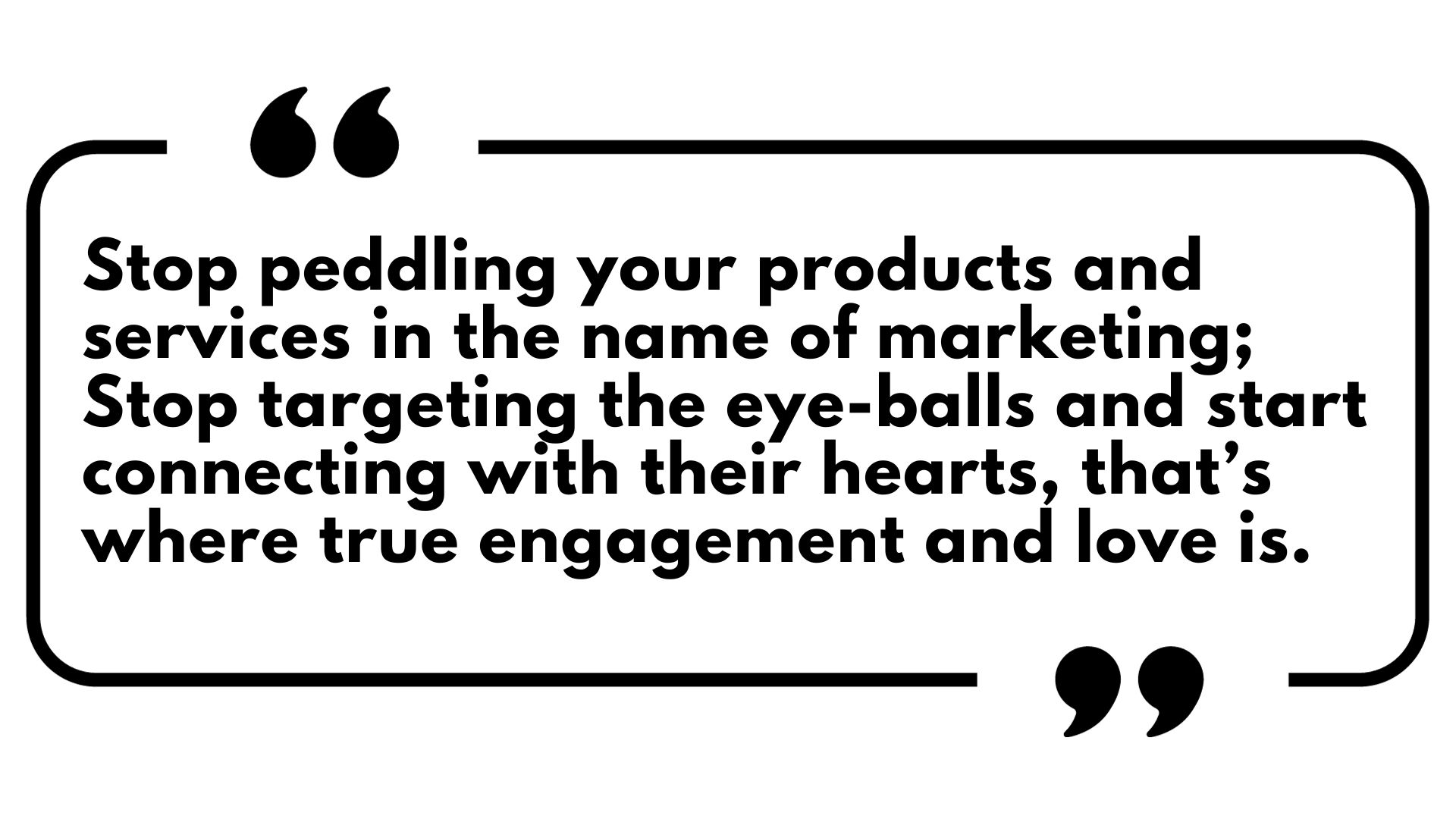
This article is written by Aashish Chopra, Best Selling Author.

Aashish Chopra
Best Selling Author | Viral Video Marketer | Content Marketing | Digital Marketing
Aashish Chopra is a best-selling author of ‘Fast, Cheap and Viral’, An award-winning viral video marketer with 82 viral videos over 9 years. Aashish is passionate about content and believes that in times of declining attention spans and chaotic news-feeds, creativity is the differentiator.”
Vibrant Media Bags INR 100 Crore Media Account for Jio-bp
In a three-agency pitch, Mumbai-based Vibrant Media defeated GroupM and Beehive Communications to win Jio-bp’s INR 100 crore media business. Reliance BP Mobility Limited (RBML) is a 51:49 joint venture between Mukesh Ambani’s Reliance Industries Limited and British Petroleum. It was founded in 2021 to run the Jio-bp brand and elevate it to the top of the fuel and mobility markets in India. In October 2023, Reliance Industries’ in-house Vibrant Media hired Madison Media’s chief operating officer, Karthik Lakshminarayan, as Vice President.
Collaboration for energy solutions
BP and RIL announced their collaboration for Jio-bp in 2021. It is among the best suppliers of energy solutions in India, offering a wide network of convenience stores, EV charging stations, fuel, and mobility stations. Jio-bp declared in May of last year that it would be providing high-performance fuel at base prices for the first time in India. It introduced ACTIVE technology into its diesel. The additivised diesel was to be made available at 1,555 petrol pumps, with truckers saving up to INR 1.1 lakh per vehicle per year due to 4.3 percent improved fuel economy.
Read More: UAE Lays Out New Federal Decree-Law for the UAE Media Industry
Vibrant Media bags Jio-bp’s media duties
The joint venture, which operates under the “Jio-bp” brand, hopes to dominate the fuel and mobility markets in India by taking advantage of Reliance’s widespread reach across 21 states and its millions of customers via the Jio digital platform. BP has contributed its vast worldwide experience in premium differentiated fuels, retail, lubricants, and cutting-edge low-carbon mobility solutions. Over the next three years, RBML intends to increase the number of gas stations it currently owns from 2,000 to as many as 5,500. Later this month, a blitz of outdoor, digital, print, and television advertisements is anticipated. In July 2023, Jio-bp gave Saatchi & Saatchi Propagate the digital mandate for the account. Vibrant now has control over this, handling the majority of Reliance brands’ media spending.
Future of India’s fuel market
Over the next 20 years, India’s fuel market is predicted to grow at the fastest rate in the world. This comes with the country’s passenger car population expected to nearly double. Over the next five years, RBML wants to grow its fuel retail network from over 1,400 retail locations to 5,500. Due to this rapid expansion, the number of employees working in service stations will need to increase fourfold. These will grow from 20,000 to 80,000 over this time frame. In the upcoming years, the joint venture also hopes to expand from 30 to 45 airports.
Read More: GroupM Bags INR 200 Crore Domino’s Pizza Account’s Media Mandate
Google Reaches $5 Billion Class-Action Privacy Lawsuit Settlement
Google has reached a settlement to resolve a $5 billion class-action privacy lawsuit. It claimed the tech giant improperly tracked users’ personal information. It did so when it used the incognito mode of its Chrome browser and other similar “private” modes in other browsers to monitor their online activities. In 2020, a lawsuit was filed alleging that Google had deceived users into thinking that using Incognito mode would prevent it from tracking their online activities. The lawsuit claimed that despite users using ostensibly “private” browsing, Google’s advertising technologies and third-party websites that used Google Analytics or Google Ad Manager kept track of users’ site visits and activities, sending the data back to Google servers.
The proposed trial
A trial in the proposed class action was set for February 5, 2024. However, US district judge Yvonne Gonzalez Rogers in Oakland, California postponed it after Google and consumer attorneys announced they had reached a preliminary settlement in the lawsuit, which sought US$5 billion in damages. However, internal Google emails revealed in the lawsuit showed that the search engine giant was tracking users. They were especially the ones who were using incognito mode to measure web traffic and sell ads.
Read More: Publicis Media, UK AOP To Test Privacy-Enhancing Technology (PETs)
Google’s class-action privacy lawsuit
The plaintiffs had claimed that even when they switched Chrome and other browsers to “private” browsing mode, Google’s analytics, cookies, and apps allowed the Alphabet division to monitor their online activities. Additionally, the plaintiffs claimed that Google’s actions produced an “unaccountable trove of information” about people who believed they had taken privacy-protecting measures. It included everything from harmless information about friends, favorite foods, shopping routes, and pastimes to possibly embarrassing details. The plaintiffs’ attorneys requested at least $5,000 for each user. This would have cost at least $5 billion. However, the settlement will probably not come close to that amount. Furthermore, the parties did not provide a sum for their preliminary settlement.
Google has reached a settlement
The settlement was reached only a few weeks after Google’s request for a judge to decide the case was denied. Next year will see the start of a jury trial. Google was accused in the lawsuit of violating users’ privacy by “intentionally deceiving them with the incognito option.” It was filed in a Californian court. According to the initial complaint, Google and its staff members were granted the “ability to discover personal information about people’s lives, passions, and online activities.” By February 24, 2024, a formal settlement is anticipated for court approval. Class action lawsuits have emerged as the primary means of challenging large tech companies on data privacy issues. This is because the US does not have a comprehensive law governing the handling of personal data.
Read More: IAB Tech Lab Launches Two Working Groups for AI and Privacy Sandbox
How Live Service Gaming is Taking Brand Marketing to New Heights!
In the realm of video games, live service gaming is one of the best ways to accomplish brand marketing. Brand marketing is now reaching new heights. One example is the cohesively developed strategy game “Star Trek Fleet Command” for PC and mobile devices by Paramount and Scopely. This December marks the fifth anniversary of “Star Trek Fleet Command”. In order to accomplish objectives and gather resources, players can interact with other players while exploring the virtual “Star Trek” universe in the game. Every month on the first Tuesday, the game receives a fresh batch of ships, characters, and other content. The majority of the game’s revenue comes from in-game sales, and it is available for free to play.
What is live service gaming?
The term “live service gaming” describes techniques used to continually provide players with events, updates, and new content over a prolonged period of time. It seeks to hold players’ attention and keep them playing longer. Through its immersion of players in the Star Trek universe and encouragement to discover other related content, including TV series, Star Trek Fleet Command acts as a kind of brand marketing. It seeks to pique the curiosity of current franchise fans while drawing in prospective new ones.
Star Trek Fleet Command – Prime example of a live service game
Even though in-game purchases allow “Star Trek Fleet Command” to make money, its main function is as an engaging means of brand promotion. Its main objective is to keep the interest of long-time Star Trek fans while also attracting new ones. Doug Rosen, Senior Vice President of Games and Emerging Media at Paramount, stressed the value of creating a passionate fan base that goes beyond the actual game. The game serves as a spark, enticing players to check out more “Star Trek” media, like the recently released series on Paramount+.
Not a revenue stream
Star Trek Fleet Command, however, is not a straight revenue play for Paramount. Rather, it is an especially captivating kind of brand marketing meant to pique the interest of ardent “Star Trek” fans as well as win over new ones. As evidenced by the fact that “Star Trek Fleet Command” has no in-game advertisements, any money made from the game is of secondary importance.

Image credit- Star Trek Fleet Command
Read More: Paramount to Utilize iSpot As Currency Measurements for TV Ads
Fan base
“Star Trek Fleet Command” has a devoted and active fan base, which is proof of its success. There are hundreds of thousands of daily logins and close to 20 million downloads. This indicates a large number of active players. With over 98% of players regularly logging in, the games have an impressive retention rate. 90 percent of players are in it for the long run, with the majority participating for at least a year.
Significant investment in live service gaming
The user base of “Star Trek Fleet Command” has increased, and it now encompasses more of the Star Trek universe. Scopely has made a substantial investment in growing the Star Trek Fleet Command team. It did so to maintain this kind of long-term involvement. The development team consisted of about fifty individuals when the game was released five years ago. Since then, the group has expanded to about 250 members.
Scopely’s commitment to live service gaming
The expansion of Scopely’s “Star Trek Fleet Command” team is indicative of the significant financial outlay required for live service games to maintain long-term user engagement. It’s difficult to replicate the feat of creating a live service game that can entice players to return for five years. Creating and managing live service games can require a significant financial commitment. Brands who are prepared to put in the work can reap great rewards. Moreover, not all brands opt for this strategy due to the associated costs and lengthy lead times. However, live service gaming has shown itself to be an effective brand marketing tool. This is particularly true for long-lasting and devoted fan bases of franchises like “Star Trek.”
Final words
Summing it up, live service gaming offers a revolutionary chance for brand promotion. One such game that captivates millions of players and fosters a strong bond with the Star Trek franchise is Star Trek Fleet Command. Brands can expand their reach, inspire fan loyalty, and open up new growth prospects by cultivating a devoted and active fan base.
Read More: Paramount Launches Conduit that Directly Integrates Major Programmatic Platforms
A Glimpse At the Best YouTube Advertisements of 2023
In 2023, more people than ever before watched YouTube. Fans let their favorite musicians be the soundtrack to their life as they followed the hottest trends and creators. When sports fans tuned into NFL Sunday Ticket’s new location, they witnessed innovative new kinds of AI-powered creativity. In the realm of YouTube advertisements, culture and brands coexisted. With AI innovation driving growth on connected TVs (CTV) and YouTube Shorts, there seemed to be no end to the opportunities to engage with viewers. As the year draws to an end, let’s take a look back at the wide range of creative YouTube advertisement.
Storytelling on YouTube has no boundaries, as demonstrated by the abundance of brands that sprang to life in 2023 across a wide range of media and screens. Let’s start with the prominent advertisements. Pepsi, Louis Vuitton, and Apple advertisements have all been recognized by YouTube as the best of the past 12 months.
Apple: Study with Me
Actor Storm Reid appears in Apple’s 90-minute “Study With Me” film, which has received 18 million views. In the video, Reid uses a variety of Apple devices for the course and the Pomodoro technique to get the most out of her study time. The salient features of the content appear to be that it is both practical and celebrity-driven. However, it also corresponds with the key characteristics of “Study with Me” content.
Pepsi – Rise Up Baby
Pepsi used formats, durations, and styles in a very common way. It advertised multiple iterations of a music video for its marketing campaign called Rise Up Baby. In India, the advertisement proved to be extremely profitable, and Pepsi also conducted similar music-based campaigns in many regions.
The music video, which features Indian actor Ranveer Singh, music producer Tanishk Bagchi, and singer-songwriter Vishal Dadlani in a powerhouse song and dance performance, stays true to the brand’s enthusiastic ethos.
Louis Vuitton – fashion show
While this was going on, Louis Vuitton shared a whole 20-minute show to promote its Fall-Winter 2023 collection, winning over many celebs as well as fashionistas. The program, which embodies the “spirit of the inner child,” explores the effects of the digital age and common human experiences while showcasing nostalgic imagery. Throughout the 20-minute performance, Spanish singer-songwriter Rosalia lights up the stage and sets the tone for the runway.
Read More: A Lookback At the 5 Best Christmas Ad Campaigns of 2023
Qatar Airways – C.H.A.M.P.I.O.N.S
Over 23 million people have viewed Qatar Airways’ official FIFA World Cup song, which features DJ Rodge and Cheb Khaled and celebrates the love of football and the FIFA World Cup. Fans all over the world responded well to this catchy tune, which quickly gained popularity.
Skullcandy – Meet Rail® ANC
Skullcandy is a name that frequently appears on lists honoring the greatest YouTube advertisements, and this time was no exception. A great example of epic hype, on-brand references, and captivating storytelling that skillfully combines features and benefits is the “Meet Rail® ANC” clip. Furthermore, the soundtrack is excellent, but that is to be expected from an advertisement for headphones, isn’t it?
Christian Dior- Miss Dior
The Christian Dior Miss Dior advertisement, which has received over 108 million views, demonstrates the potency of a compelling story. Using her acting prowess, Natalie Portman tells a story of love while providing an insight into the attitudes and emotions that this fragrance seeks to evoke in the viewer. As smells cannot be shared via a screen, Dior’s messaging is effectively communicated through visual clues and storytelling.
Final Words
This year, brands were multifaceted and layered. Their tales were brought to life on YouTube in a variety of forms, lengths, genres, and tones, garnering millions of views and comments in the process. Every artistic decision exposed a distinct facet of the brand’s identity and mission. The effectiveness of these very visible video advertisements emphasizes how crucial it is to provide interesting, captivating, and shareable material to connect with viewers. To draw in viewers and bolster their brand’s visibility, advertisers need to make the most of creativity and innovation as YouTube grows into a major worldwide platform.
Read More: CGI Advertising: Pioneering Future of Marketing or Merely a Social Media Fad?
Reliance Jio and IIT-Bombay Working Together To Launch Bharat GPT
Reliance Jio Infocomm, the largest telecom service provider in India, is working with the Indian Institute of Technology – Bombay (IIT-B). Together, they are developing an artificial intelligence (AI) project called “Bharat GPT,” a large language model tailored to India’s needs. Akash Ambani, the chairman of Reliance Jio Infocomm also indicated the plans to launch an operating system (OS) for televisions.
Introducing AI within Jio sectors
Jio is looking to introduce AI at its enterprise and across sectors within the group. The firm will launch products and services in the media space, commerce, communications, and devices. It is expected that Bharat GPT will be developed as an AI for Jio telecom products, activated by voice command and gestures to minimize human research hours and simplify the experience of using Jio across all platforms. Ambani emphasized the impact of artificial intelligence stating that the next decade will be defined by applications utilizing large language models and generative AI. He highlighted the ongoing efforts to integrate AI not only as a vertical within the organization but also horizontally across all sectors.
Underscoring the importance of a comprehensive development ecosystem for Jio 2.0
Ambani emphasized the importance of building a robust development ecosystem and outlined the company’s commitment to realizing the vision of Jio 2.0. He shared his views about how AI is going to consume everything and that AI stands for artificial intelligence and also stands for all included. The Bharat GPT program, a collaboration with IIT Bombay since 2014, aims to harness generative AI, drawing inspiration from larger language models like ChatGPT. This initiative aligns with Jio’s broader strategy to explore the transformative potential of AI across various industries.
Read More: Epic Games Prevails in the Antitrust Trial Against Google
Plans for Television OS
In addition to the Bharat GPT program, Ambani unveiled Jio’s ambitious venture into television technology. He disclosed that the company has been diligently working on developing its own operating system (OS) for televisions. The company is looking to extend its product offerings beyond telecommunications. Ambani highlighted the comprehensive approach to launching this TV OS.
Future of AI in India
Anticipating the transformative impact of artificial intelligence, Ambani shared the company’s dedication to integrating AI vertically within the organization. Furthermore, he also expressed integrating AI horizontally across all sectors. As part of this commitment, Jio is poised to introduce innovative products and services. It will solidify its position as a technology leader in India. The timeline for the release of Bharat GPT has not been announced yet, but it is expected that the release date will be announced by Jio in the first few months of 2024. Ambani also dropped a hint about the launch of Jio 2.0 without elaborating any further.
Upcoming Plans for AI and 5G
Ambani expressed excitement about the imminent launch of 5G private networks. Jio plans to offer a 5G stack to enterprises of all sizes. Describing India as the “biggest innovation center’ for the next decade, Ambani conveyed confidence in the country reaching a USD 6 trillion economy by the end of the decade. Furthermore, he also encouraged young entrepreneurs not to fear failure. He is positioning Jio as the world’s largest startup. Moreover, he has urged them to contribute to societal well-being while remaining deeply passionate about their work.
Read More: Unlocking the Power of AI in Digital Marketing: A Comprehensive Guide
CGI Advertising: Pioneering Future of Marketing or Merely a Social Media Fad?
Technology integration has always been a driving force behind change in the dynamic world of advertising. In the realm of marketing, captivating images can do wonders for capturing customers’ attention and making a lasting impression. Computer-generated imagery (CGI) is one such invention that has drawn interest from both consumers and marketers. It is a state-of-the-art technique that allows imagination to come to life in advertisements. CGI has completely changed how people relate with brands, from mesmerizing product advertisements to enticing brand marketing.
The unseen hero of the advertising industry, computer-generated imagery (CGI) subtly intervenes to realize seemingly unattainable goals. When utilized skillfully, computer-generated imagery (CGI) has the power to transform a commercial from ordinary to spectacular, producing moments that stay with the audience long after the TV is turned off. But the question remains: Is CGI advertising a precursor of things to come in the marketing industry, or is it just another passing social media fad?
What is CGI advertising?
CGI OOH, also known as CGOOH or “Faux-out-of-home” (FOOH), is a new marketing strategy that is about to be implemented. The use of computer-generated imagery (CGI) in advertising has become indispensable. CGI has been widely adopted by the OOH sector to create unique social media advertising. By using CGI in advertising, companies can now communicate their messages in more imaginative and eye-catching ways, drawing viewers in and increasing interaction.
The goal of CGI marketing material has changed over time, striving for a startling degree of realism and organic content imitation. Moreover, marketing directors and brand managers support these fictitious initiatives. CGI is the term for the skill of producing realistic visual content with the use of cutting-edge graphics and sophisticated computer tools. All media, including social media, online videos, and traditional television, have a proper role in advertising. CGI marketing initiatives, which are frequently witty, lighthearted, and designed to go viral, have become very popular on social media.
CGI in Advertising
This trend has its own implications and questions regarding production for design-build firms and brands that want to install physically. One important thing to keep in mind about CGI marketing campaigns is how easily they can be reposted and shared again without any additional information or credit. Because original sources and creators are only occasionally mentioned, viewers might conclude that these campaigns were actually created and put into action in real life. Digital content can make it difficult to distinguish between fact and fiction because it is vulnerable to the same issues that help fake news proliferate. Additionally, over time, it may increase brand credibility and trust.
Read More: Virtual Product Placement: The Newest Upstart in TV. Find Out How!
Rise of CGI Advertising
Nowadays, CGI is widely used in the majority of the media, entertainment, TV broadcast, and advertising sectors. Through digital renders, advertisers can produce realistic, high-quality virtual worlds and objects that aren’t actually there in the real world. On the other hand, it enables the construction of objects that are not real and might be too costly or difficult to capture on camera or photograph. Real-world environments or objects can be created much more quickly and affordably with the aid of CGI. These can be used in films, animated movies, and video clips; they can also be 2D, 3D, or even CGI animated.
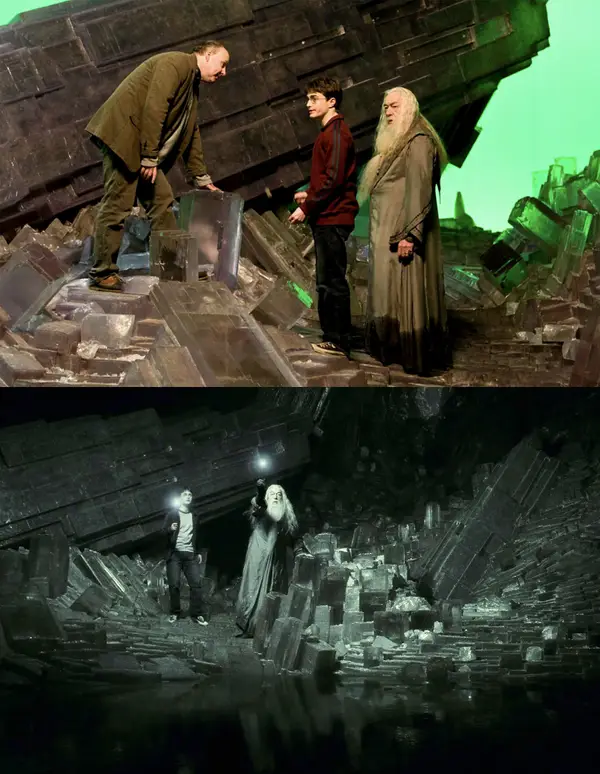
Image credit- Buzzfeed
For a considerable amount of time, computer-generated imagery (CGI) has been used to bring various magical and imaginary characters to life. It is currently a standard component of the movies and television shows that people watch on a daily basis. However, it’s also critical to comprehend how CGI is currently used in other sectors, such as enterprise, corporate engineering, and advertising. To help brands and corporates better connect with their customers and clients, CGI is being used as a tool for product design and the creation of advertising content. Simultaneously, the objective is to produce better and more affordable goods. The use of CGI in content creation has grown significantly, and this trend is expected to continue as more and more content creators choose to use it instead of traditional media.
How CGI seamlessly integrates into various advertising channels
CGI frequently looks effortless as it appears on numerous advertising channels, almost like a magic trick. It all comes down to how adaptable and simple it is to integrate. CGI doesn’t just work in isolation; it collaborates with other media types to create a cohesive, powerful message.
- Television Commercials
- Social Media Advertising
- Digital Billboards
- Mobile and Web Apps
Television Commercials
One area where CGI really shines is in TV commercials. Here, it either takes center stage or collaborates with live-action video to produce breathtaking visual effects. Commercials with such striking visuals have the power to stick in the minds of viewers and connect with a large audience while condensing complex ideas into a digestible format.
Social Media Advertising
Today’s social media is flooded with CGI-enhanced advertisements. Amidst the abundance of content, computer-generated imagery (CGI) adds a level of sophistication that draws the user in, whether it is an animated explainer video or a 3D product demonstration. Increased brand awareness and a higher CTR are correlated with visual engagement.
Digital Billboards
Modern digital billboards frequently have animated CGI that visually appealingly conveys the brand’s message. Because of the lifelike CGI presentation, this type of advertising—also known as digital-out-of-home (DOOH)—leaves a lasting impression.
Mobile and Web Apps
Numerous companies include specialized online or mobile applications in their customer engagement plans. By offering interactive features or graphics that improve user experience and promote brand loyalty, CGI improves these platforms. Advanced images can make people stay on a page longer, which increases the opportunity for businesses to interact with their audience.

Image credit- Render3quick
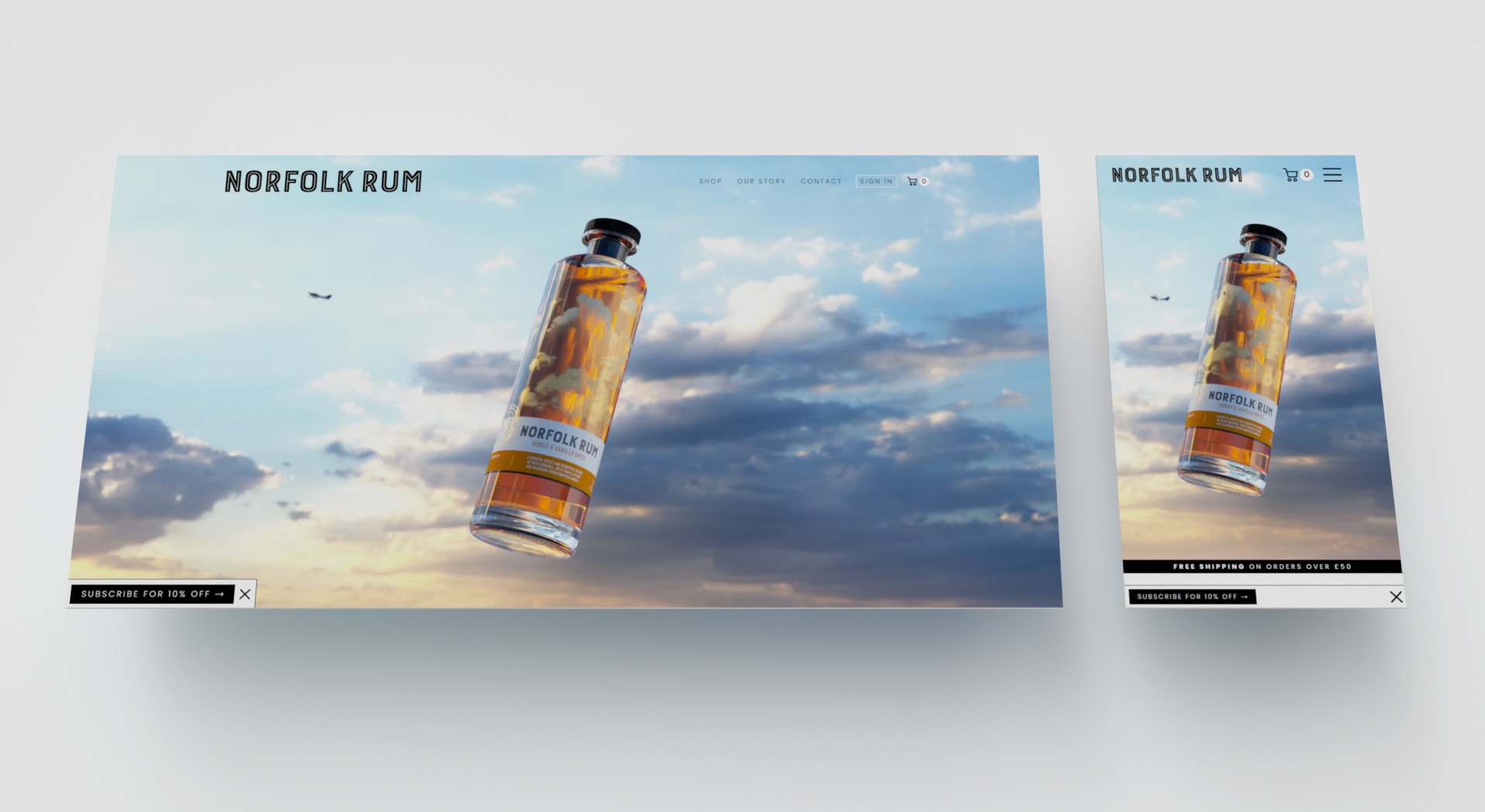
Image credit- Pixelsilo
Read More: A Lookback At the 5 Best Christmas Ad Campaigns of 2023
Benefits of CGI Advertising
Using CGI has certain advantages over traditional media. It must be acknowledged, though, that CGI is sometimes misinterpreted as an expensive medium to use. When one understands the truth, however, this couldn’t be far from reality.
- Cost reduction
- Efficient and Flexible to Produce
- Creating Buzz with Customer Engagement
- Limitless Opportunities
- Cross Platform Compatability
Cost Reduction
Because CGI works with virtual representations created by computer software, it can frequently be more affordable than traditional media. It does away with the necessity for costly location shootings, complicated set designs, and logistical difficulties. Furthermore, a CGI asset can be changed and utilized for future campaigns across all advertising platforms after it has been generated. Time, money, and resources are saved in this way.
Efficient and Flexible to Produce
CGI’s beauty is in its capacity to go beyond what is physically possible. Brands have the ability to dream large and even transform the most incredible concepts into real, visual experiences that pique the interest of their target audiences. Customers can inspect products from all sides with the help of hyper-realistic product renderings, which increases their confidence and sense of trust when making purchases. Building a virtual representation of a product or environment with 3D software offers far greater flexibility and allows for the creation of computer-generated renderings that eliminate the need for post-production retouching to remove unwanted artifacts from the scene.

Image credit- Marketing Mind
Creating Buzz with Customer Engagement
Higher engagement rates are a result of visually compelling content, and CGI elevates the game by enthralling viewers with its otherworldly charm. Social media shares of these eye-catching ads are more likely to occur, greatly increasing brand exposure and reach. Businesses can effectively showcase their offerings by using CGI to create stunning product images, interactive advertisements, virtual videos, and room scenes.
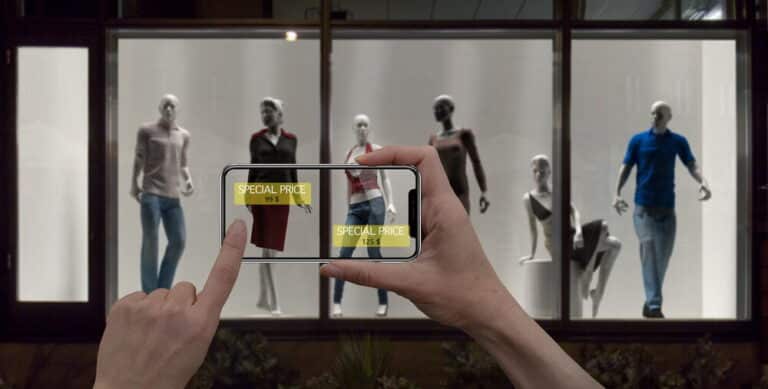
Image credit- Marketing Mind
Limitless Opportunities
There are countless opportunities to quickly and easily create and modify content with CGI. Customers who wish to introduce whole product lines or experiment with various settings throughout the day to test out various settings and environments will find great advantages in this. The only restriction when using CGI is one’s imagination. It could be defying the laws of physics, taking viewers to amazing places, or even breathing life into imaginary characters. The opportunities are endless, enabling the production of genuinely distinctive and engrossing commercials.
Cross Platform Compatibility
The adaptability of CGI is its best feature. The three most often used mediums of interaction are cell phones, tablets, and PCs; a significant portion of user interaction occurs on cell phones. Because audiences prefer familiarity, it is imperative to provide them with identical experiences across all platforms. Once the model is ready, it can be animated or even made into an interactive game using computer-generated imagery (CGI). It can be displayed on any screen, device, or media platform.
Constraints of CGI Advertising
While there are many benefits to using CGI in advertising, there are also potential drawbacks.
- Cost
- Authenticity
- Ethics
Cost
CGI can be costly, particularly when creating intricate or lifelike images. For startups and smaller companies looking to experiment with technology in their advertising campaigns, this can be a barrier.
Authenticity
When CGI is used to produce fictitious images of goods or services, some consumers may believe that the advertisement is deceptive or unauthentic. Furthermore, using CGI excessively can make a scene seem untrue. Advertisers that use traditional filming techniques risk losing the interest of audiences if they grow too accustomed to seeing CGI.
Ethics
The usage of CGI in ads raises additional ethical issues. These could involve the possibility of making false claims or misrepresenting products.
Future Trends in CGI
CGI is turning into a vital tool for virtual marketers as businesses strive to produce more captivating and immersive content. Let’s examine some upcoming changes in CGI technology and trends that digital entrepreneurs should be aware of.
- Real-Time Rendering
- AR (Augmented Reality) and VR (Virtual Reality)
- AI and Machine Learning
Real-Time Rendering
The era of real-time rendering is revolutionizing content creation in marketing. This makes it possible to create interactive and highly dynamic content by enabling the technology of real-time CGI. Real-time rendering enables marketers to create immersive reports, adjust to user interactions, and instantly personalize content.
AR (Augmented Reality) and VR (Virtual Reality)
Virtual reality and augmented reality technologies are increasingly being incorporated into online marketing and advertising campaigns. Marketers use AR and VR to create immersive logo storytelling, digital showrooms, and interactive product reviews. Given the anticipated growth in the use of AR and VR in advertising, it is imperative that digital entrepreneurs investigate the ways in which CGI can enhance these studies.
AI and Machine Learning
The application of CGI by marketers is being revolutionized by AI and ML. With the help of these technologies, business owners can analyze large datasets to gain insights into the behavior and potential of their customers. Additionally, this data can be utilized to produce more specialized and tailored CGI content.

Image credit- Ndigitec
Success Stories
Jacquemus
Internet absurdities are nothing new to Jacquemus! The upscale French fashion brand gained international attention in April when their cult-favorite Bambino purses were spotted wandering the streets of Paris. With millions of interactions, the campaign went viral online and expanded Jacquemus’s reach and brand recognition.
Maybelline
The Maybelline Sky High Mascara Express campaign quickly became viral on social media. Popular forms of transportation were featured in short films posted on Maybelline’s Instagram, with life-size mascara brushes brushing back their oversized eyelashes. Customers became more aware of Maybelline’s new product due to the campaign, which highlighted it.
Barbie
Who can forget the viral Barbie campaign that went viral on the internet? A massive Barbie appeared in front of the Burj Khalifa in Dubai prior to the Barbie movie’s premiere. Despite having nothing to do with Barbie’s official marketing campaign, the video created curiosity and made sure that the film was in everyone’s thoughts.
Just a social media fad?
There is also the belief that CGOOH is a passing trend. Many believe that it is excessive. People are starting to grow tired of the fashion. But is it truly their fault? It was received and embraced so quickly that nobody had a chance to recognize its potential fully. It is necessary to examine the possibility at this point. Nevertheless, savvy brand managers and agencies intend to go beyond this. However, where it goes from here will be what sets it apart.
Some claim that since the field is constantly changing, marketers will need to adapt. Evolution is the obvious solution! There will always be new technologies, but what will set them apart is how skillfully they are used to convey compelling stories and leave an impression.
Final Words
Brand-audience relationships have been transformed by CGI marketing. By telling gripping stories and arousing feelings, CGI produces memorable experiences that have a profound impact on customers. Using CGI in advertising can lead to more creative and appealing ads, as well as the ability to simplify and communicate complex ideas. CGI is expected to become a digital marketing backbone as this revolutionary technology gains traction and creates captivating connections with viewers unlike anything seen before.
Read More: Magna Global’s Hatem Fakih Reveals Strategies for Thriving in GCC’s Media Landscape


